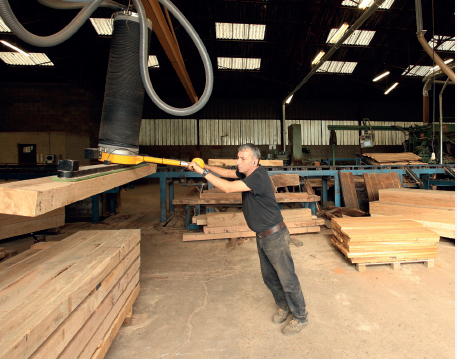The French Massif Central: Wood and stone as part of a horizontal value chain.
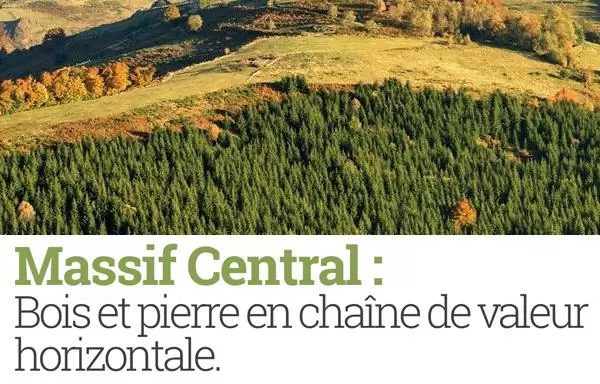
A REGION UNDER THE MICROSCOPE
WHO? Behind the project: the Massif Central public–private partnership (GIP) committee and the regional equality commission (Commissariat général à l'égalité des territoires - CGET) from the initiative by the Massif Central wood industry committee (Etats Généraux de la filière bois Massif Central)
WHERE? The Massif Central: 22 French départements, including the Auvergne Rhône-Alpes region
WHAT? WHY? In the Massif Central, and more generally in France, construction sites mainly use foreign materials. This initiative aims to create local horizontal value chains around organically sourced materials to encourage the use of natural materials and local skills in the building industry.
WHAT PARTNERS? The four regions of the Massif Central including the Auvergne Rhône-Alpes Region, the State and Europe
-----
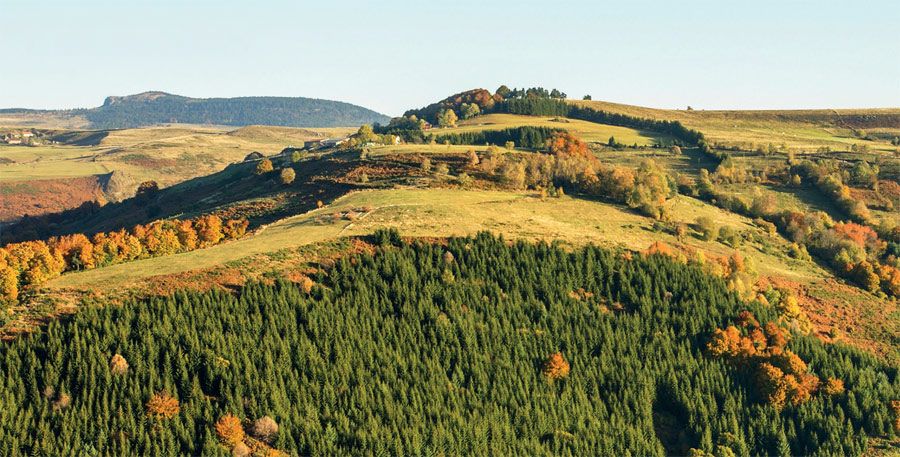
Wood, stone, hemp and wool: all organically sourced materials (natural materials with low environmental impact), very much available in the Massif Central and yet so little used by local builders.
And for what reason?
Unrestrained global competition, lack of awareness of organically sourced materials by prescribers, substitution by other more recent materials, etc. are all factors that mean that these natural materials are forgotten or considered inaccessible. And yet these organically sourced materials are a real asset for the Massif Central. This is because these natural resources, rating highly in terms of environmental, landscape and heritage quality, convey a strong potential for know-how, growth, and development of products that are identified with the mountains and the Massif Central. At the same time, increased awareness of environmental issues by those involved in the economy and concern for the maintenance of jobs and skills are all positive signals for local development of business in these sectors. On this basis, the Massif Central committee, the GIP Massif Central and CGET are building up momentum for the construction of horizontal value chains for natural resources with low environmental impact. Wood and stone are the first materials under consideration. They have led to the creation of the business networks Vivier Bois and Vivier Pierre Massif Central.
What does "horizontal value chain" mean?
The idea is to build a value chain starting from the consumer (downstream, i.e. craftsmen, carpenters, tilers, etc.) and go back to the raw material (for the "wood" value chain, this would be trees). This approach seeks to identify products that have a specific quality and are delivered at the right price to the end consumer (the prescriber, or customers such as local authorities, individuals, etc.). This brings the collective effort to bear downstream of the value chain by initiating collaborations between several complementary trades that are available in the Massif Central.
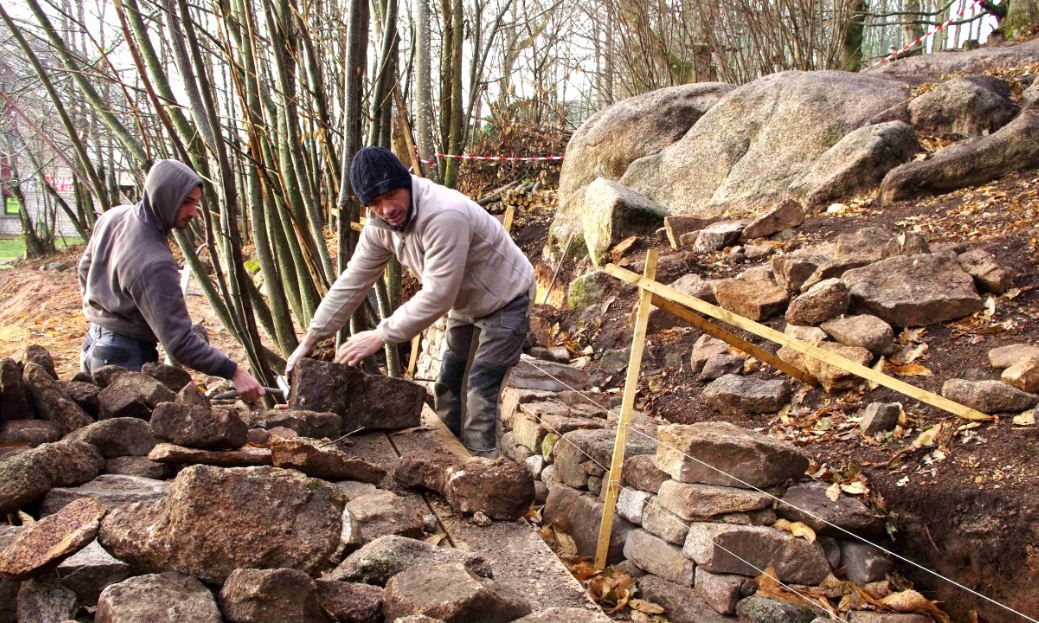
"Value is gained at the interface between trades. Each trade becomes aware of the others' imperatives. We are trying to "break" individual links and connect each trade so as to develop skills based around a particular material. The idea is to provide global competitiveness by ultimately improving the profitability of companies",
explains Laetitia Deru, a coordinator at Vivier Bois Massif Central who also provides support for the Vivier Pierre Massif central project.
Specifically, how are these local horizontal value chains implemented?
The local horizontal value chain is based on volunteer companies that have taken up the challenge of global competitiveness and wish to work together as part of a network. These companies are linked up on the initiative of very diverse stakeholders: the companies themselves, authorities such as the Communauté d’Agglomération de l’Ouest Rhodanien (West Rhône Urban Community) or development agencies such as the Allier economic expansion committee. This leads to temporary groups of companies that will respond collectively to tenders or private contracts. The network effect will help them improve their offer and to create the right conditions to meet the demands of the local market. It brings them closer to the local dynamics of energy renovation, town centre rehabilitation, etc.
In parallel, support services are being developed through a digital collaborative platform. These act as accelerators, reinforcing these local horizontal value chains and ensuring sustainability of the momentum. They aim to raise companies' skills level.
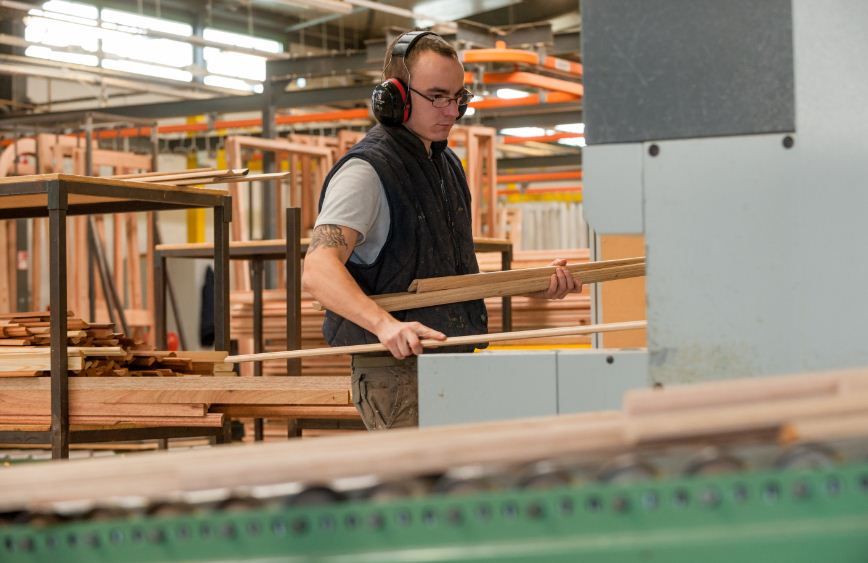
Some allow people to learn how to use 3D drawing. Others focus on the provision of a materials library, or a database of companies capable of carrying out projects with natural materials with low environmental impact. Still others aim to create a dedicated space for each area or community grouping together projects or future projects, etc. For the Wood horizontal value chain, eight areas are jointly building this platform.
In Auvergne Rhône-Alpes, the Ardèche, Beaujolais Vert, Saint Flour and Allier regions are all involved in this collective production. From 2016, this tool is ultimately expected to provide support for 440 companies. This regional momentum is driving, coordinating and developing the Vivier bois / Vivier pierre project.
For more information: http://www.massif-central.eu
Laetitia Deru - Coordinator at Vivier Bois Massif Central - Support for the Vivier Pierre Massif central project
Bernard Labonne – Project officer at Filières d’excellence, Filière Bois, Santé – CGET Massif Central
-----
FOCUS ON INITIATIVES
An illustration of how the digital collaborative platform is used in the Beaujolais Vert region.
To encourage energy renovation, the Communauté d’Agglomération de l’Ouest Rhodanien (COR) has set up a local platform for energy renovation of private housing for residents and local professionals. The purpose of this platform is to enhance the quality of support for residents, to link local inhabitants and building professionals and to simplify access to support and funding.
For residents, COR provides objective advice as to the technical aspects of the renovation and helps them obtain the best possible funding. Building on this platform, COR is launching a call for projects in 2016 to support ten renovation projects with a "BBC" (Bâtiment Basse Consommation - Low Consumption Building) rating.
For companies, the platform offers various services such as: access to a network facilitating collaborative work, support for the emergence of clusters, relaying information about regulatory and technical changes in the building industry, access to training induced by changes in practices and contract opportunities, enhancement and promotion of local know-how, and establishing procurement groups to reduce the cost of building work and make it available to residents. The local energy renovation momentum has made it possible to link building professionals and local companies such as Buitex who offer eco-designed insulation based on recycled wood fibre.
This first means that COR is testing a tool that is fully in keeping with the Vivier bois / Vivier pierre project. Secondly, on the strength of this experience, COR has taken away from the Vivier bois / Vivier pierre project some lessons about this momentum: technical milestones, the complex points related to linking all those involved, etc.
See also, in ECLAIRA newsletter N°2, the article: "Le Beaujolais Vert en chemin vers l’économie circulaire (Beaujolais Vert on route for the circular economy)!"
---
Source: ECLAIRA - Newsletter Number 3 / April 2016
edited by CIRIDD with support from Région Auvergne - Rhône-Alpes
